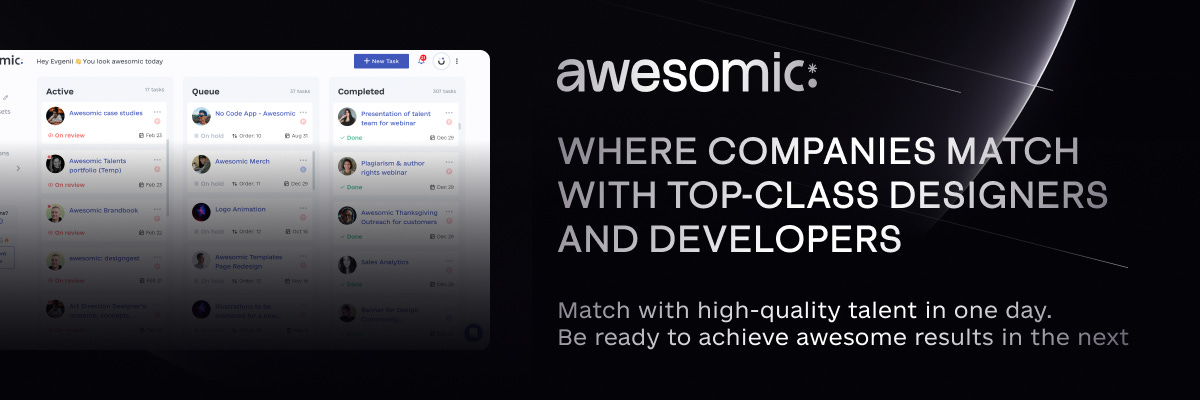In 1970, Monty Python aired a peculiar sketch about a café where every menu item contained Spam, the canned meat product.
When a customer requested a Spam-free meal, Vikings began chanting "SPAM" repeatedly, drowning out all meaningful conversation.
Little did they know this absurdist comedy would perfectly foreshadow the future of digital communication.
Today’s issue is sponsored by Awesomic
Great design fuels engagement, builds trust, and drives growth.
Awesomic matches you with vetted designers and devs in just 24 hours, so you can start your project right away—without the hassle of hiring or managing freelancers!
The Spam problem
What began in 1980s chatrooms as users typing "SPAM" to push unwanted content off-screen has evolved into a complex ecosystem of automated content, algorithmic feeds, and AI-generated material.
Today, with 70% of the global population owning smartphones and spending over six hours online daily, the digital landscape has become increasingly cluttered with spam-like content.
By 2016, bots accounted for more than half of all internet traffic, with 30% classified as harmful bots and 20% as beneficial ones.
This trend has only accelerated with the rise of AI content generation tools and algorithm-driven content distribution.
The Algorithm-First Economy
Modern social platforms have largely abandoned follow-based feeds in favor of algorithmic content distribution.
This shift fundamentally changes how content reaches audiences and how businesses must approach digital engagement.
Instead of building direct relationships with followers, brands now compete for algorithmic favor, often at the expense of authentic connection.
Strategic Opportunities for Startups
1. Build High-Trust Communities
Opportunity: As digital noise increases, the value of verified, high-trust communities grows exponentially.
Action Steps:
Create rigorous vetting processes for community members
Implement multi-level verification systems
Develop clear community guidelines and enforcement mechanisms
Foster peer-to-peer connections within your community
2. Embrace High-Touch Service Models
Opportunity: While competitors chase scalability through automation, differentiate through personalization.
Action Steps:
Implement concierge-style customer service
Offer personalized onboarding experiences
Create dedicated account management for key customers
Develop systems for gathering and acting on individual customer feedback
3. Content Quality Over Quantity
Opportunity: Stand out by producing fewer but higher-quality pieces of content.
Action Steps:
Focus on original research and insights
Create comprehensive, well-researched content
Develop a distinct brand voice
Invest in professional editing and fact-checking
4. Build Direct Distribution Channels
Opportunity: Reduce dependency on algorithmic distribution by owning your channels.
Action Steps:
Develop a robust email marketing strategy
Create private communication channels (e.g., dedicated apps or platforms)
Build strong referral networks
Invest in community-driven growth
5. Leverage Human Authentication
Opportunity: Use human verification as a feature, not a bug.
Action Steps:
Implement video verification for key transactions
Create human-moderated spaces
Develop reputation systems based on verified human interaction
Host in-person or live virtual events to strengthen community bonds
6. Focus on Data Transparency
Opportunity: Build trust through radical transparency about data usage and content authenticity.
Action Steps:
Clearly label AI-generated content
Provide detailed analytics about content sources
Share methodology behind recommendations
Implement blockchain or other verification technologies
Looking Ahead
The future of digital interaction isn't about eliminating spam entirely—it's about creating spaces where authentic engagement can thrive despite its presence.
Successful startups will be those that recognize this shift and position themselves as islands of authenticity in a sea of automated noise.
Key Takeaways for Implementation
Audit Your Current Stack: Evaluate your technology stack for over-reliance on automation and algorithmic distribution.
Measure What Matters: Create metrics that value engagement quality over quantity.
Invest in Human Capital: Build teams capable of delivering high-touch, personalized experiences.
Design for Trust: Make trust-building features central to your product design, not afterthoughts.
As the digital landscape continues to evolve, the most successful startups will be those that find ways to leverage technology while maintaining authentic human connections.
The goal isn't to fight the spam economy but to build something valuable alongside it—creating spaces where meaningful interactions can flourish despite the surrounding noise.





